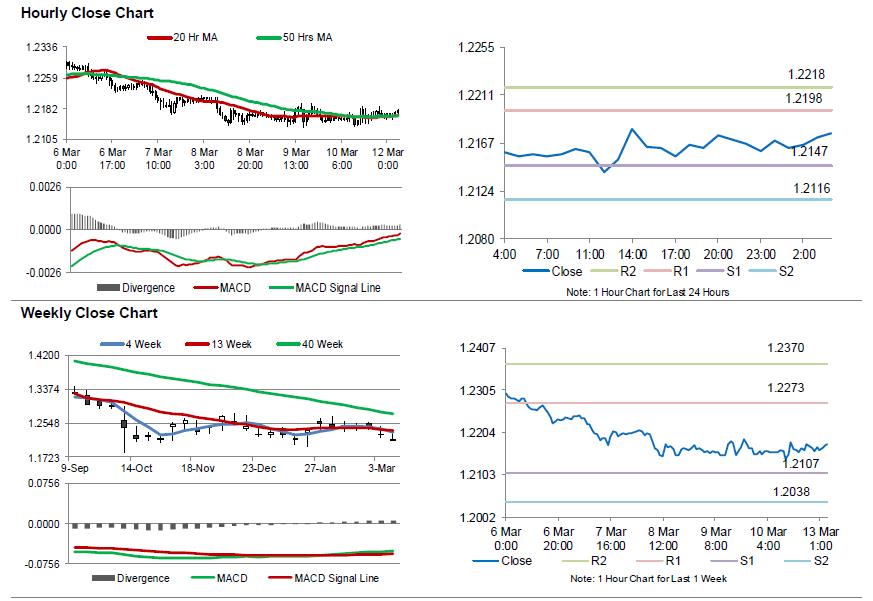For the 24 hours to 23:00 GMT, the GBP rose 0.18% against the USD and closed at 1.2175 on Friday.
On the macro front, Britain’s manufacturing production dropped more-than-anticipated by 0.9% on a monthly basis in January, following a revised rise of 2.2% in the prior month, while investors had envisaged for a fall of 0.7%. Further, the nation’s industrial production registered a less-than-expected drop of 0.4% MoM in January, compared to a revised rise of 0.9% in the previous month. Moreover, the nation’s construction output eased 0.4% in January, higher than market expectations for a drop of 0.2% and following a rise of 1.8% in the prior month. However, the nation’s total trade deficit narrowed to a level of £1.97 billion in January, following a revised deficit of £2.03 billion in the prior month, whereas markets were anticipating the nation to register a deficit of £3.1 billion.
In other economic news, NIESR estimated that UK’s gross domestic product (GDP) rose 0.6% in the three months to February, meeting market expectations and compared to a revised rise of 0.8% in the November 2016-January 2017 period.
In the Asian session, at GMT0400, the pair is trading at 1.2177, with the GBP trading marginally higher against the USD from Friday’s close.
The pair is expected to find support at 1.2147, and a fall through could take it to the next support level of 1.2116. The pair is expected to find its first resistance at 1.2198, and a rise through could take it to the next resistance level of 1.2218.
With no economic releases in the UK today, investors will look forward to global macroeconomic news for further direction.
The currency pair is trading above its 20 Hr and 50 Hr moving averages.

